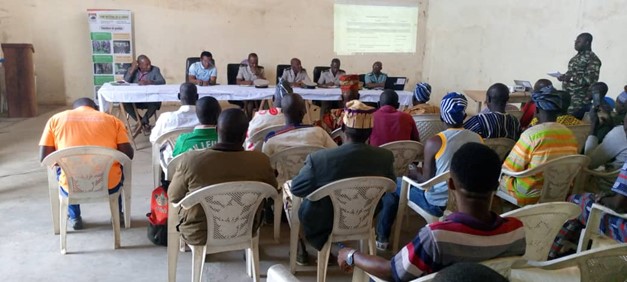Mid-term assessment of the implementation of the OIPR DZNE - riparian villages agreements for access to the PNC in the context of the worship of sacred sites
Follow-up missions to these agreements have enabled us to ascertain the level of their implementation and to initiate new partnerships. Several worship initiatives in the PNC have been carried out to seek cures, drive away evil spirits and solicit professional promotions. In all, 30 access agreements for the worship of sacred sites were signed in the localities of Nassian, Bouna and Tehini.A workshop was organized to take stock of worship activities carried out at sacred sites within the PNC by communities in each sector, to identify the advantages and difficulties associated with the implementation of the convention for access to sacred sites within the PNC, to provide the OIPR with an annual calendar of worship activities, and to formulate recommendations for improving collaboration between the signatories of this convention. The review workshop took place on December 20, 2023, in the meeting room of the Koutouba Sub-Prefecture. It brought together the Sub-Prefects of Tehini, Nassian, Kotouba and Bouna. The meeting was also attended by representatives of the villages that have signed the conventions, OIPR officials and a representative of the technical partner (GIZ/Pro2GRN).
In all, thirty (30) agreements have been signed between the communities and OIPR for access to the PNC for worships in thirty (30) riverside villages. Fifty-eight (58) worships were performed in five (05) villages in 2023. Four hundred and seventy (470) people accessed the PNC during all the worship activities carried out in 2023. A few testimonials were collected from the local population during the workshop to present the benefits of the PNC access agreements.
Testimonial 1 (village of Kokpingué): fetish worship inside the PNC helped slow down the succession of misfortunes that were befalling the village.
Testimonial 2 (Koutouba village): Several benefits of worship can be cited, the latest being the professional promotion of a state official who had requested the fetish's services and was rewarded with a high position.
Testimonial 3 (Village of Yalo): the village representative reported that drought was affecting the village, leading to crop failure. Following adoration of the sacred sites, the rains were abundant and harvests were good.
A schedule of village worships was drawn up. Some of the difficulties encountered relate to access to the sites, insufficient financial resources for the worships, sites that cannot be found, and the disappearance of some worshippers. Faced with these difficulties, OIPR DZNE and its partners intend to provide technical and financial support to find the people's sites and make the first sacrifices.
